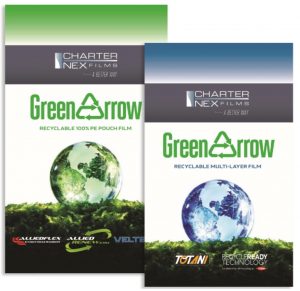Sustainability and Recyclable Films
Flexible packaging offers significant value and sustainability benefits to product manufacturers, retailers, and consumers. Although there are many packaging options available to meet various packaging demands, flexible packaging offers considerable advantages, with fewer trade-offs. Flexible packaging reduces waste, energy use, and greenhouse gas emissions. Additionally, flexible packaging provides many consumer conveniences including extended shelf life, easy storage, microwaveability, and resealability.
For a snap-shot of the advantages of flexible packaging over alternative packaging types, please refer to the graphics below from the Flexible Packaging Association.


ePac and our Planet

At ePac, we are committed to finding ways to continue to improve flexible packaging’s impact on our environment. Part of this commitment includes sourcing recyclable films; for example, refer to Charters GreenArrow films. (http://charternex.com/news-events/charter-nex-launches-greenarrow-recyclable-films/ )
Charter’s GreenArrow films include stand-alone films, and print and sealant films for laminations. These films offer the same great convenience and functionality as multiple material structures, but have the added benefit of recyclability. These multi-layer films meet the content requirements for the How2Recycle “Store Drop-Off” label, and can be recycled wherever PE film recycling streams are available.
GreenArrow films are ideal for a variety of markets including food and consumer packaging. For products requiring barrier properties, films with oxygen and moisture barriers are available.
Together with the significantly lower impact digital printing has on the environment, ePac is committed to using films and manufacturing processes that positively impact our planet.

